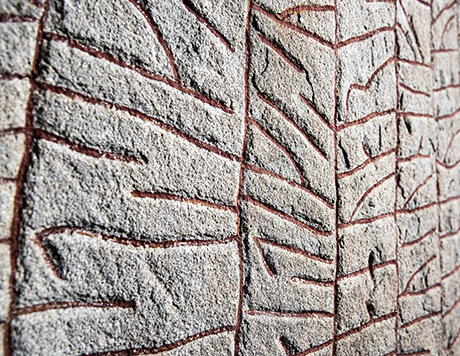Over the years archaeologist has found several unexpected artefacts and ancient remains. But a new study suggested that one of the world's most famous runestones was created by Vikings.
As per the new study, the stone which is also known as Viking runestone was raised in the ninth century in central Sweden near the lake Vattern. As per the expert, this stone has the longest runic inscription in the world with more than 700 runes covering its five sides. Now after putting so much effort to translate the ancient runes, researchers may have found an answer.
The ancient rock
The experts from three universities in Sweden suspect that the inscriptions on the stone are more of an allusion to an impending period of extreme winter, as the person who raised the stone tried to put their child's death into a larger perspective.
As per the author of the study, "The inscription deals with anxiety triggered by a son's death and the fear of a new climate crisis similar to the catastrophic one after 536 CE."
The claims around the stone

It should be mentioned that while previous studies suggested that in the sixth century, volcanic activities around the planet changed the global temperature, at the same time as per many experts a major solar storm occurred, which created a long-lasting aurora in the upper reaches of the northern hemisphere.
At that time, the weather became colder than its usual and strange colours also were visible in the sky. These incidents led the other person write on the runes that another climate catastrophe will appear in future.
The new study
The experts from Sweden stated in their new study "The inscription deals with anxiety triggered by a son's death and the fear of a new climate crisis similar to the catastrophic one after 536 CE."
Even though the passages on the rock refers to a battle which lasted for 100 years, the scientists suspect that it could have been a metaphor for the climate. This new interpretation is based on a collaborative finding between researchers from philology, archaeology and the history of religion. While describing the referred battle, in the study they stated "The conflict between light and darkness, warmth and cold, life and death."
Bo Graslund, a professor in archaeology at Uppsala University stated that the solar storm coloured the sky in dramatic shades of red, crop yields suffered from an extremely cold summer, while a solar eclipse occurred just after sunrise. He also added that one of these natural incidents were would have been enough to raise fears of another Fimbulwinter.
However, it should be mentioned that while explaining the scenario Bo also mentioned about the three-year-long winter, mentioned in the Norse mythology, which is the body of myths of the North Germanic peoples, depicting a sign of the coming of Ragnarok, which is the cataclysmic destruction of the cosmos and everything in it – even the gods as per the mythology.









